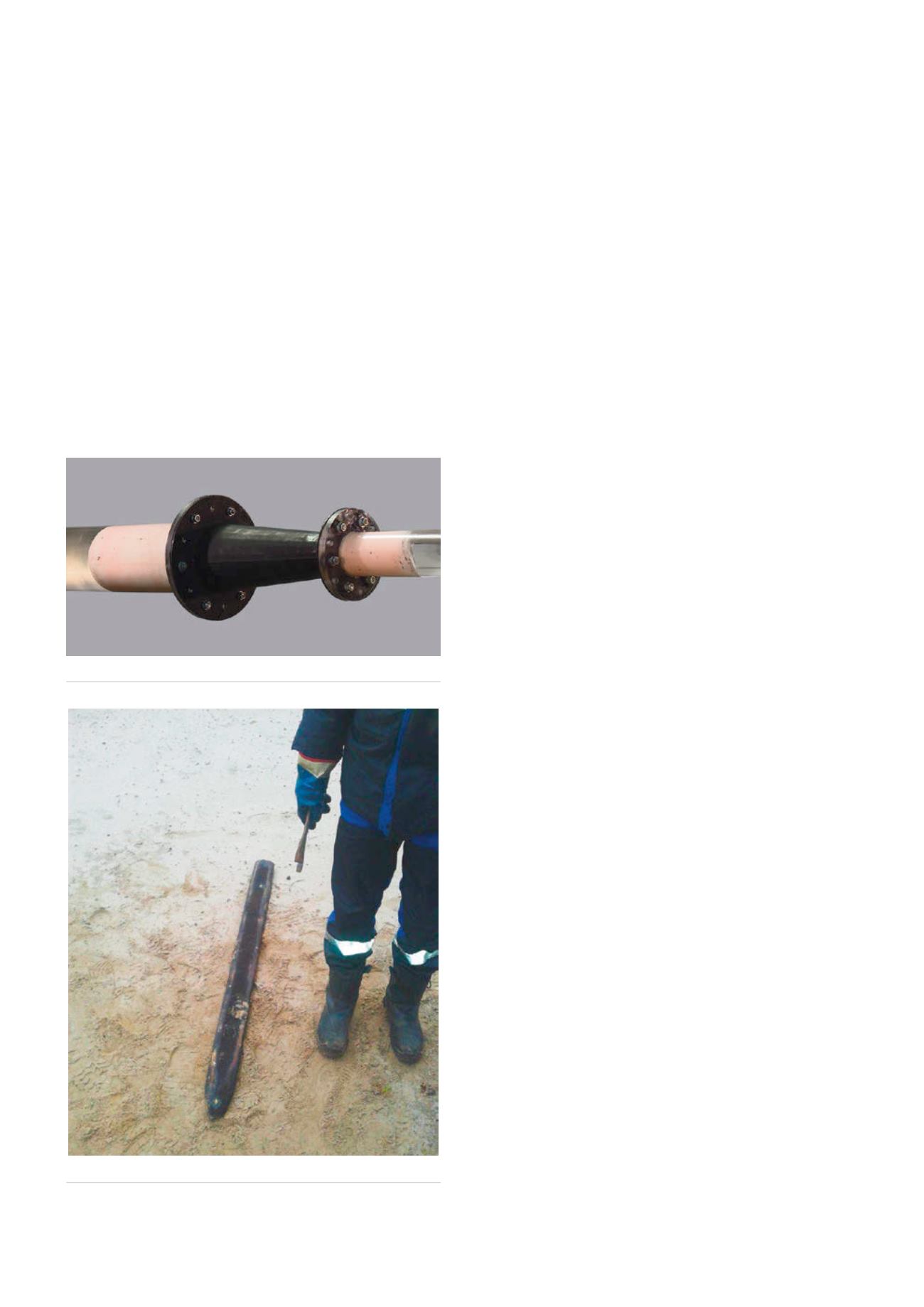
and 50% diameter reductions, the material is essentially
incompressible. With diameter reduction, foam pigs change their
mechanical properties and compress and harden. In contrast,
EVO-Pigs increase in length to maintain the same volume. By
having ‘shape memory’, they return to their original diameter
after exiting the restriction. There are variants, the most
commonly used are EVO-Pig LG (formerly L-Gel) for standard
temperatures, and EVO-Pig XT for extreme temperatures. Their
features, (depending on variant*), are:
)
)
Elastic, incompressible, negotiate diameter restriction and
short radius bends.
)
)
Used in flexible lines, non-damaging to internal linings.
)
)
Provides good fluid separation, e.g. for product batching in
multi-fluid lines.
)
)
Variable density, e.g. for easy recovery.
)
)
No need for pig launcher/receiver, supplied in launch
canister.
)
)
May be extruded through suitable port.
)
)
In certain circumstances, may be formed in-situ, inside pipe.
)
)
Chemically compatible with most pipeline fluids.*
)
)
Non-hazardous materials.
)
)
Wide temperature range, -20 to +90°C.*
)
)
Slight surface swelling in contact with oil or water*,
improves seal.
EVO-Pigs have many applications. As they conform readily
to different diameters they have little scraping action, but may
be used with pick-up gels to remove loose debris. This is also
an advantage in applications where the deposit is dissolved, not
scraped off. EVO-Pigs are used in pipe flooding and dewatering
applications, and are particularly useful subsea and expelled
through a check valve or similar. EVO-Pigs are useful in line
proving, where there is risk of a mechanical pig blocking the line.
Despite their elasticity, some remarkable pieces of debris
have been removed. Figure 2 shows a 4 x 4 in. fence post,
1.5 m long that was removed from a 17 km, 16 in. dia. oil pipeline
(if anyone has lost a fence post that fits this description please
let us know!). The line was described as being ‘in a vulnerable
condition’, with barred tees and notable diameter restrictions
making it too risky to pig conventionally. Figure 3 shows EVO-Pig
after use. Due to the nature of the material, some damage to the
pig may occur, but this does not usually affect performance.
Pipeline dewatering
In a recent subsea 10 in. production pipeline dewatering
operation in the North Sea, the operator could not use
conventional pigs as there was a 10 - 6 in. reduction at the
manifold header – a novel solution was required. Aubin
proposed a single EVO-Pig to push dyed glycol/water 12 km at
0.25 - 0.5 m/s, exiting via a 2 in. subsea check valve. The EVO-Pig
was launched from a bespoke high pressure canister and driven
with nitrogen. Dewatering was a complete success, despite the
significant diameter change.
Gel pigging for pipeline cleaning
There have recently been articles describing the use of
gelled fluids in pipelines as being an innovative application
of downhole completions technology. However, pipeline
gel cleaning dates back to the late 1970s. It would appear
that, perhaps as a consequence of the ‘Big Crew Change’,
many experienced pipeline engineers are retiring, taking their
gel pigging knowledge with them. New commissioning and
maintenance engineers are not always familiar with this valuable
technique established by their predecessors.
The additional benefits of gel pig cleaning trains compared
with conventional pigging are well established:
)
)
Pick up, suspend and transport debris out of line.
)
)
Greatly increase the amount of debris removed.
Figure 1.
EVO-Pig traversing 50% diameter reduction.
Figure 2.
Wooden post removed by EVO-Pig.
40
World Pipelines
/
JULY 2015


